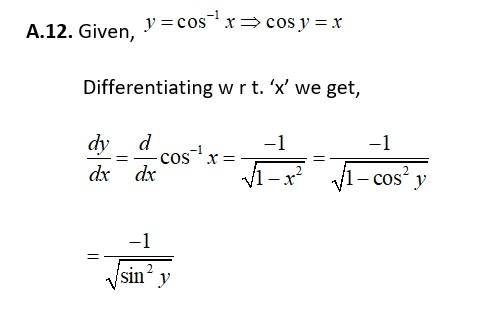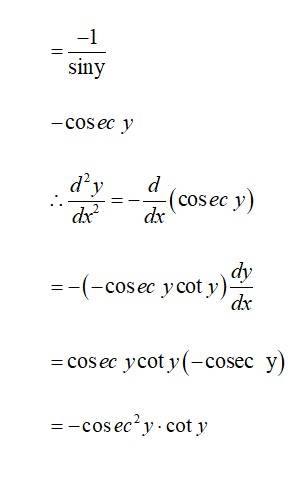Ncert Solutions Maths class 12th
Get insights from 2.5k questions on Ncert Solutions Maths class 12th, answered by students, alumni, and experts. You may also ask and answer any question you like about Ncert Solutions Maths class 12th
Follow Ask QuestionQuestions
Discussions
Active Users
Followers
New answer posted
4 months agoContributor-Level 10
So, _______(2)
_________(3)
So, L.H.S =
= 0 = R.H.S.
New answer posted
4 months agoContributor-Level 10
Given,
Integrating both sides we get,
As, we have,
The required particular solution is .
New answer posted
4 months agoContributor-Level 10
Given, D.E. is
Integrating both sides,
Given,
Then,
The required particular solution is

New answer posted
4 months agoContributor-Level 10
The given D.E. is
Integrating both sides,
Let,
Comparing the coefficient,
Putting equation (1) & (2) in (1) we get,
So,
Integrating becomes,
Given,
Then,
The required particular solution is
New answer posted
4 months agoContributor-Level 10
So,
______________(1)
Differentiating eqn (1) w r t 'x' we get,
New answer posted
4 months agoContributor-Level 10
The given D.E is
Integrating both sides we get,
Let,
Comparing the co-efficient we get,
Subtracting equation (1) – (2), we get
But from equation (3) so, we get,
And putting value of A in equation (1),
Putting value of A,B and C in
Hence, the integration becomes
Given, At
Then,
The required particular solution is:
New answer posted
4 months agoContributor-Level 10
Given,
Dividing throughout by we get,
Integrating both sides
is the general solution.
New answer posted
4 months agoContributor-Level 10
105. Given,
Differentiating w r t x we get,
Differentiating again w r t. 'x' we get,
. Hence proved.
Taking an Exam? Selecting a College?
Get authentic answers from experts, students and alumni that you won't find anywhere else
Sign Up on ShikshaOn Shiksha, get access to
- 65k Colleges
- 1.2k Exams
- 687k Reviews
- 1800k Answers






